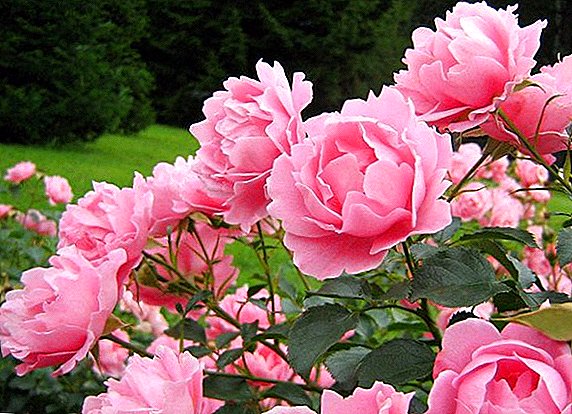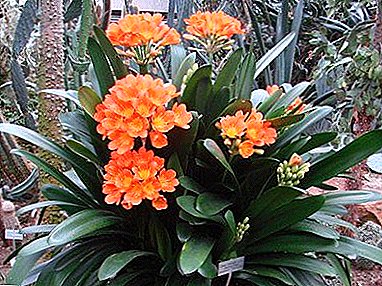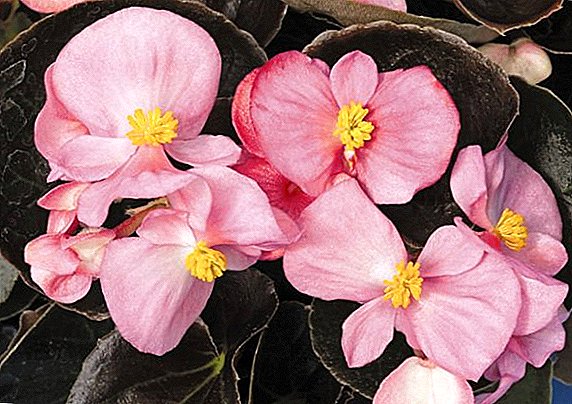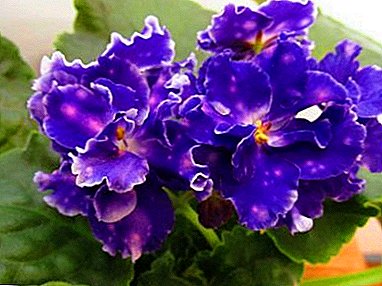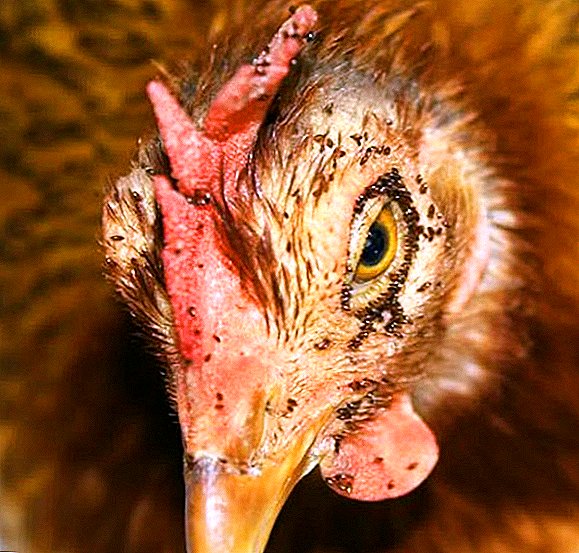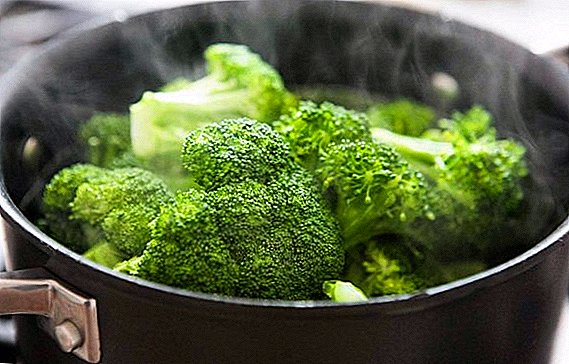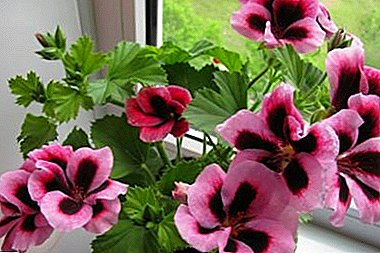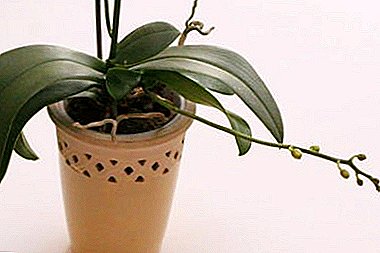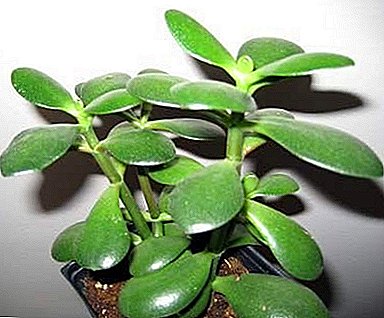
The name of the plant, Crassula, is translated from Latin as "fat". This is a more familiar name, the bastard, succulent received because of the thick leaves and stems. Jade are different: perennial and annual, herbaceous plants and shrubs.
Most come from Africa, some species are in Australia and the island of Tasmania. At home it grows in wetlands and on rocky slopes.
Crassula is very popular among fans of indoor plants. The most common form in home floriculture - Crassula Portulacus. She is loved for decoration, fast growth and unpretentiousness. In addition, there are many beliefs associated with this plant.
Characteristics of Cracula Portulacus
Leaves
Oppositely located, fleshy, slightly more thickened towards the middle. In form resemble ellipse, bright green, shiny.
Trunk
Smooth, thickens over the years and can reach up to 30 cm in diameter.
The size
It grows very quickly, can reach up to 2 meters in height. Such specimens are bushy, with tree-like shoots.
Lifespan
Folk women live a long time, up to 10-15 years. Often there are older copies.
Bloom
The flowers are a semi-sunshade. They are solitary, inconspicuous, white. In room conditions almost never blooms.
Caring for Tolstyanka Portulakova at home

The houses of the hut are contained in separate pots and in boxes in a composition with different succulents. Can be grown as bonsai.
Planting and transplanting after purchase
Like any ornamental plant, Crassoul should be adapted to the new conditions. Therefore, bringing it from the store, for some time kept in the old purchased soil.
After 1-2 weeks, the plant is carefully removed from the technological pot, shaken off the ground and transplanted into the prepared substrate, having previously arranged a drainage pan at the bottom of the pot.
The root system of the huntrophy is not developed, so they take for it shallow pot. The plant is set in the middle and gently added from all sides. Water and place for a few days in a cool place, protected from sunlight. Then placed in a permanent place. In the future, the plant is transplanted only if necessary, if the roots become crowded.
Priming
The fat woman is not demanding to the ground, as it is found mainly in poor soils at home. The substrate is easy to prepare from equal proportions of turf land, humus and sand. All this is useful to mix with small pieces of charcoal.
Watering
A fat woman loves abundant watering, but in the periods between such irrigations the potted soil should dry out completely. In winter, watering is reduced and, before watering the plant after drying, wait two to three days.
Humidity
Crassula grows well with normal humidity for apartments, but it cannot be kept near the batteries during the heating season. After about 7–10 days, it is helpful for a woman to arrange a hygienic shower.
Fertilizers

Feeding is carried out in the summer once a month, Suitable for this fertilizer for cacti. Unlike most home flowers, crassula is fertilized in winter, also once a month, but only in half the dose of fertilizer.
Light mode
Crassula portulacata lives remarkably in a southwestern or southern window. It does not even need to be protected from the sun. It tolerates light shading. May be located deep in the room when illuminated with lamps.
Thermal mode
Crassula grows in nature in places with fairly constant heat. Therefore, it does not tolerate a strong drop in temperature, 20–25 degrees in summer and 12–15 in winter will be optimal for it. At too high temperatures, the fat woman sheds its leaves, and in the cold, its roots rot.
Pruning
To form beautiful lush bush pinch the top of the plant.
Breeding methods
Cuttings
Breeding crassula does not cause any problems. The most popular way isgrafting. In the spring, cuttings are cut and dried during the day. Then rooted. This can be done in water, and you can immediately put in a wet ground and cover with a glass jar. If the cuttings rooted in water, they are planted in the ground after the appearance of the roots.
The fat woman is easy to propagate the sheet. The procedure is exactly the same as for reproduction by cuttings. The leaf is separated from the parent plant, placed in a moist soil and covered with a jar. It should be opened regularly to air out the plants and eliminate condensate that accumulates on the glass. The same procedure is done when rooting cuttings. A new shoot appears at the base of the leaf. The old sheet is carefully trimmed only after the appearance of several sheets on the new plant.
Seeds

Crassula seeds are rarely propagated with seeds, seeds are not obtained at home, they are almost never found on the market. If it is still possible, the seeds are sown in a shallow dish on a wet substrate and cover it with glass.
The seeds sprout in two weeks, during which the soil is constantly moistened, the airing of the planting, and the glass is regularly removed. After two or three leaves appear, the seedlings are planted in permanent pots.
Diseases and pests
- The main diseases of the fatty meat are associated with defects in care:
- root decay: occurs due to excess fertilizer and content at low temperature; the plant is transplanted into a new substrate or placed in a warm room;
- leaf wilting and wrinkling: occurs with an excess of moisture; reduce watering, transplant if necessary;
- stretching shoots and dropping leaves: from lack of lighting; put on the south or southwest windowsill, pritenyaya first time.
- Pests:
- mealybug;
- shield;
- spider mite
Colossians are rarely affected by pests., but if this happened, then with the defeat at the initial stage, folk remedies are used: wash with soap, put in the shower for a few minutes, cover the ground with a film, wipe with a cloth soaked in vodka. If such actions are not crowned with success, then proceed to chemical methods of struggle.
According to Feng Shui and folk omen, a sweetie brings material wealth into the house. Therefore, it is also called the "money tree".
Crassula helps relieve tension, get out of stress, helps in the prevention of viral diseases, showing antiviral activity.
A photo
Further you can get acquainted with the photo of Polsyanka Portulakova:







